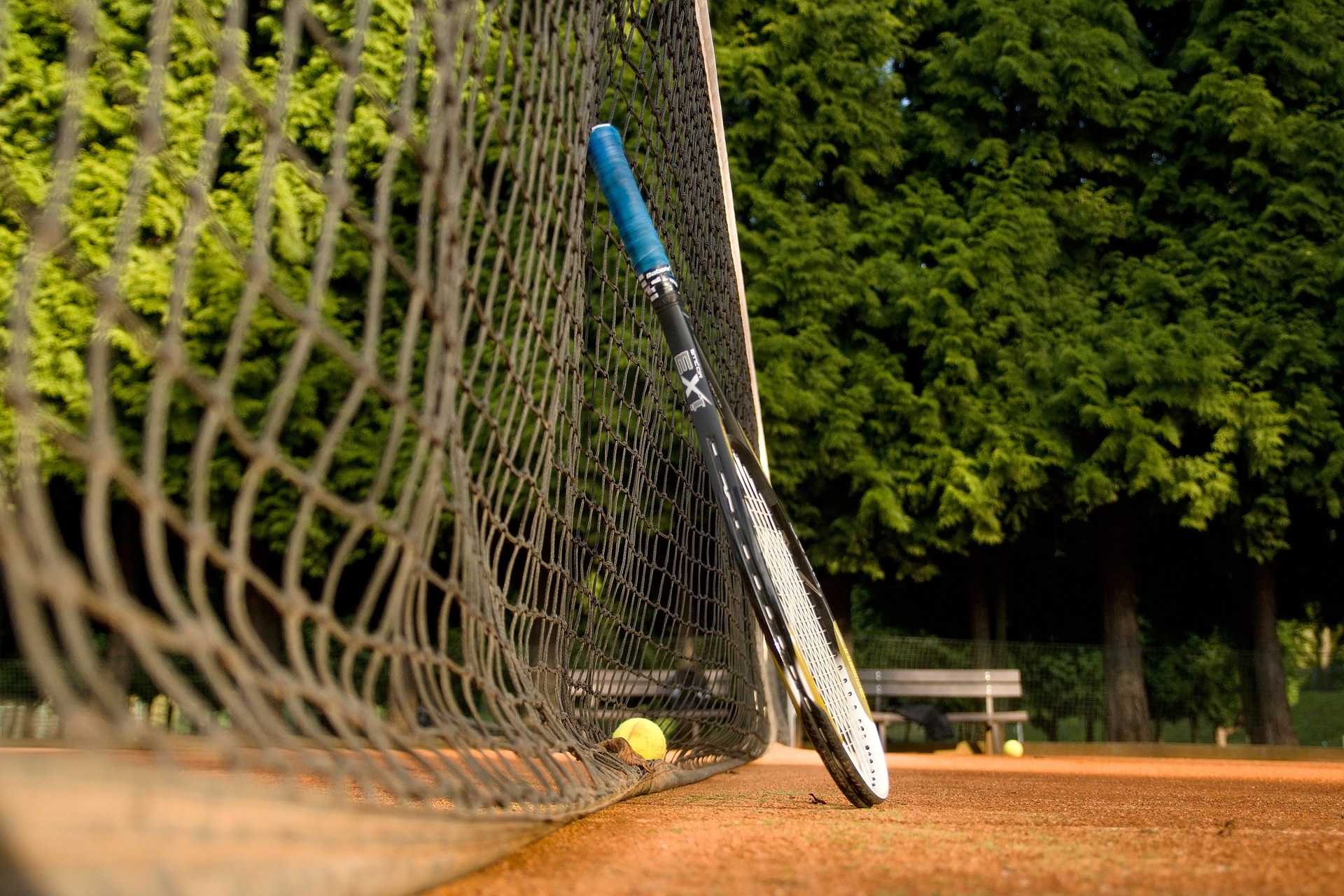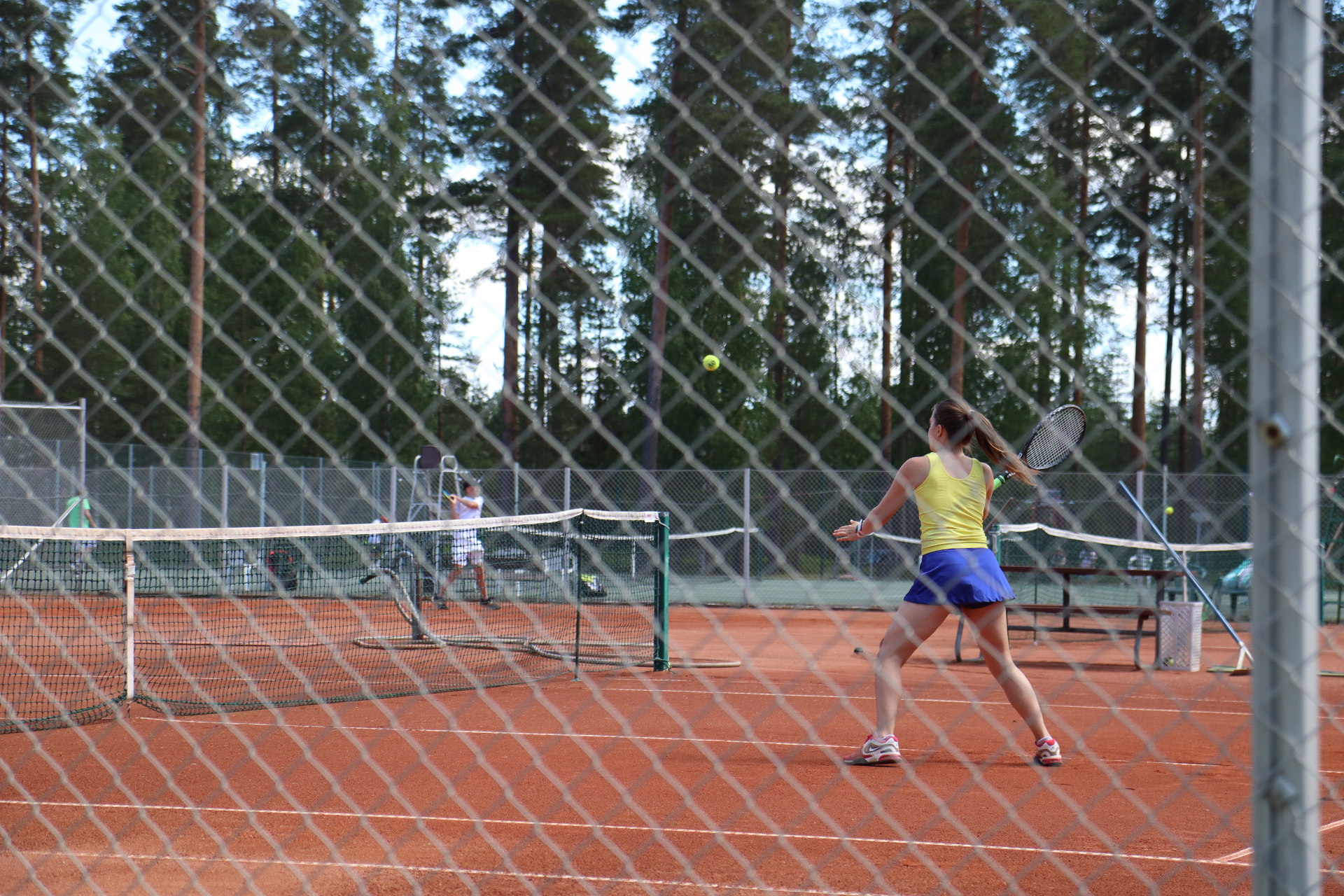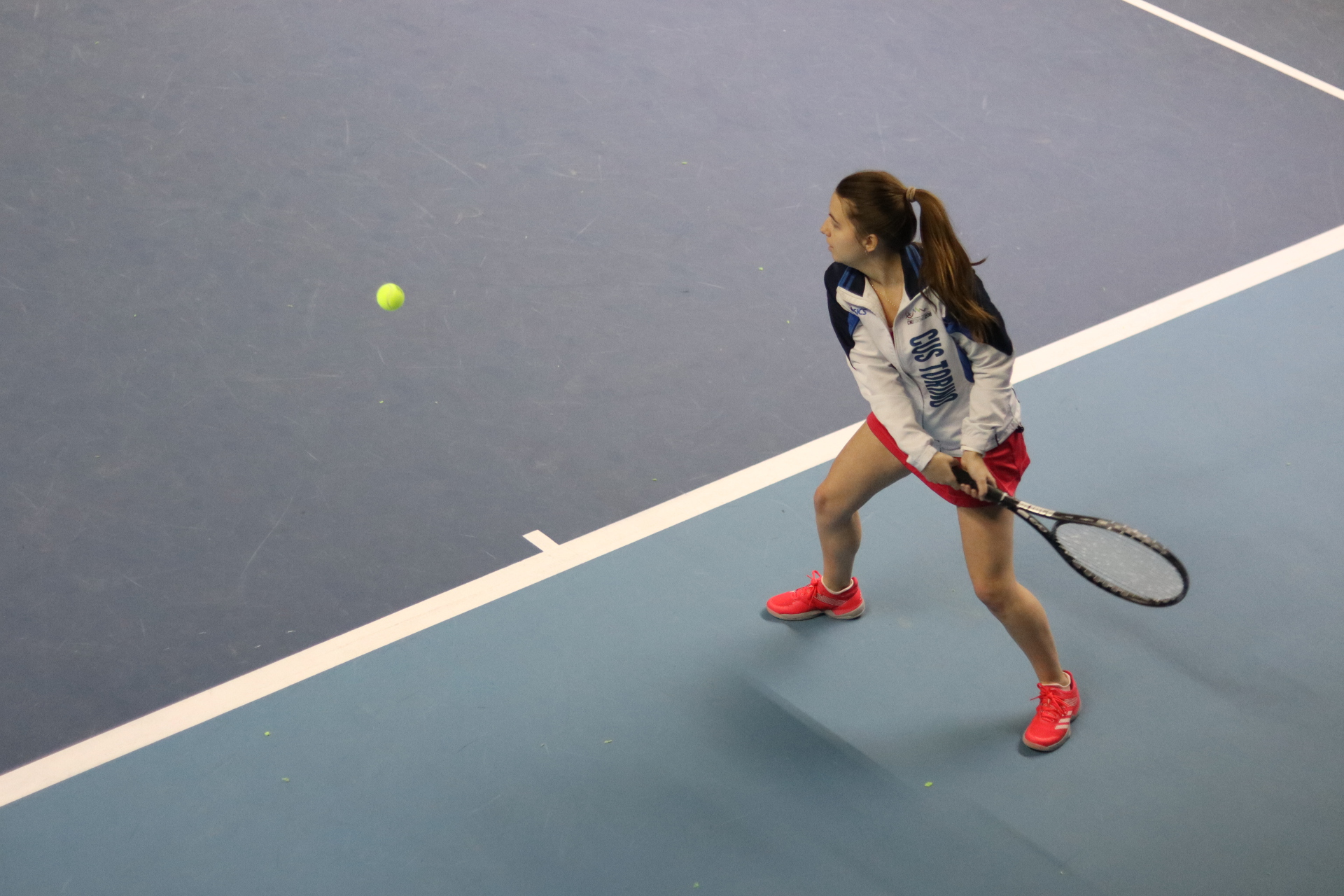Tennis shot selection made easy - zonal tennis
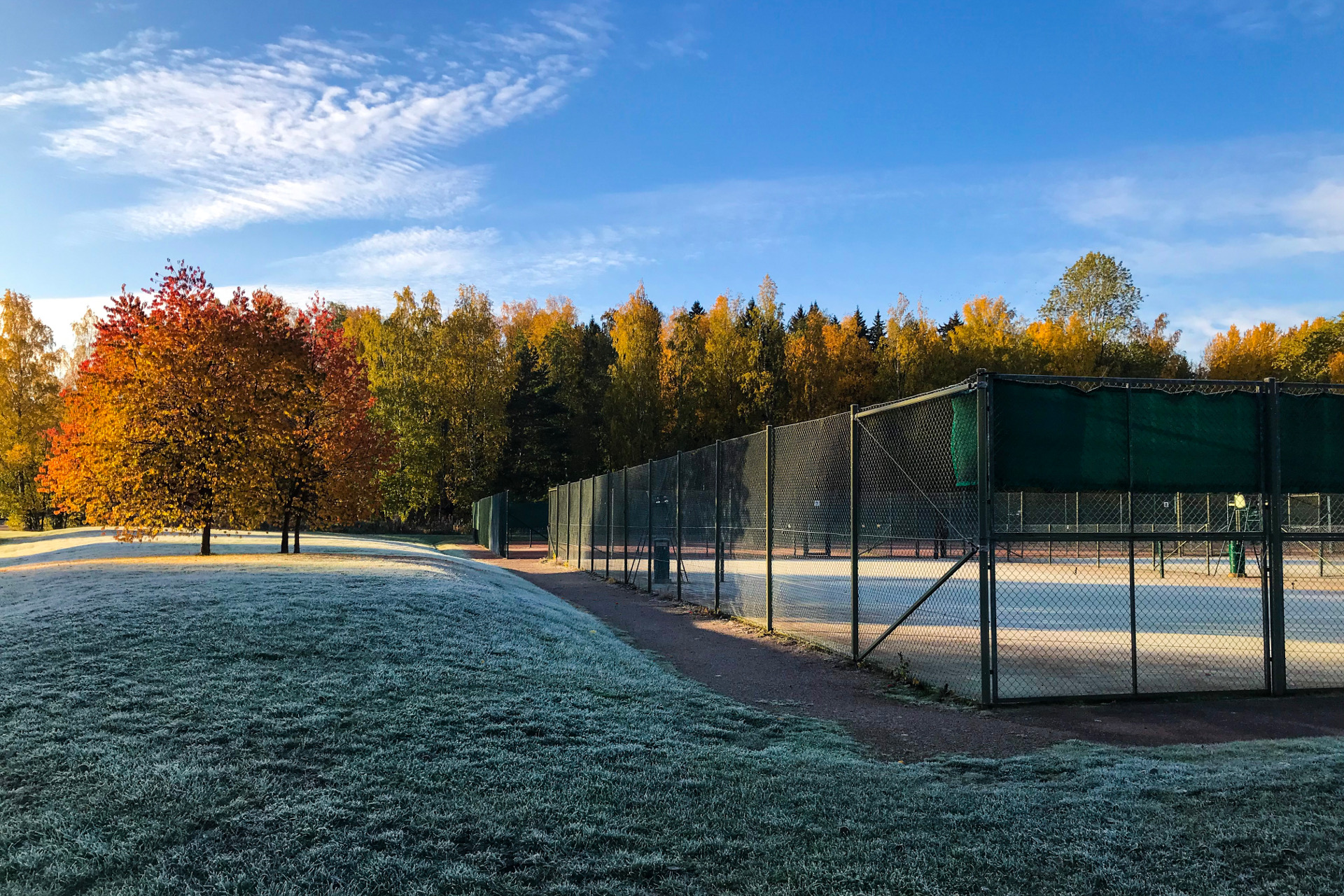
If I say zonal tennis, does it ring a bell 🔔? I hope it does! If not, then open your ears 👂🏻 (actually, eyes 👀) because we're gonna fix that right away 💁🏼♀️.
This is what you need to know. Even though most tennis players tend to blame 🤬 poor stroke technique for losing, most often that's not the case. On the contrary, what is much more likely to be the cause is poor shot selection, that is the inability to choose the right shot for the specific situation.
And if you're wondering what this has to do with zonal tennis, here's the answer. Zonal tennis is one of the strategies that can help you learn and automate proper shot selection.
So you better get good at it, ok? Promise me❗️
I'm Elena Margaria 👋🏻 and just like you, I'm on a mission to become the best tennis player I can 🥇. Even without a fancy team, or too much talent. Just with a huge desire to make it. That's why Tennis Rematch exists: to share everything I learn along the way 🤓, so you can get better faster, and together we can prove that we can achieve anything we set our mind to 🔥.
But let's get started with zonal tennis, because it's gonna make your life much much easier!
Oh, and just so you know what's coming, here are all the things this post will cover.
What is zonal tennis?
Zonal tennis is a decision-making strategy for shot selection based on the position of the ball 🎾, both on the court AND over the net.
It's a pretty old strategy 👵🏻 (in fact, it dates back to the 70s), but still very relevant. Most likely, a strategy that's never gonna be out of date, because so simple yet so effective.
Simply put, this is what zonal tennis is all about 👉🏻 The zone where the ball lands defines the next shot and, as a consequence, the height it should travel over the net.
Pretty straightforward, isn't it❓
But let's dive a bit deeper and talk about tennis court zones and air zones.
Tennis court zones
Tennis court zones refer to the location where the ball bounces, and define the constraints for the choice of the next tennis shot:
🔹 OFFENSE / OBLITERATE 💣 / GREEN 🌱 ZONE 👉🏻 from the net to 1.5 m (~ 5 feet) before the service line
🔹 NEUTRAL / TORMENT 👻 / YELLOW 🌼 ZONE 👉🏻 1.5 m (~ 5 feet) before and after the service line
🔹 DEFENSE / GRIND 💦 / RED 🌶 ZONE 👉🏻 last 3 m (~ 10 feet) before the baseline
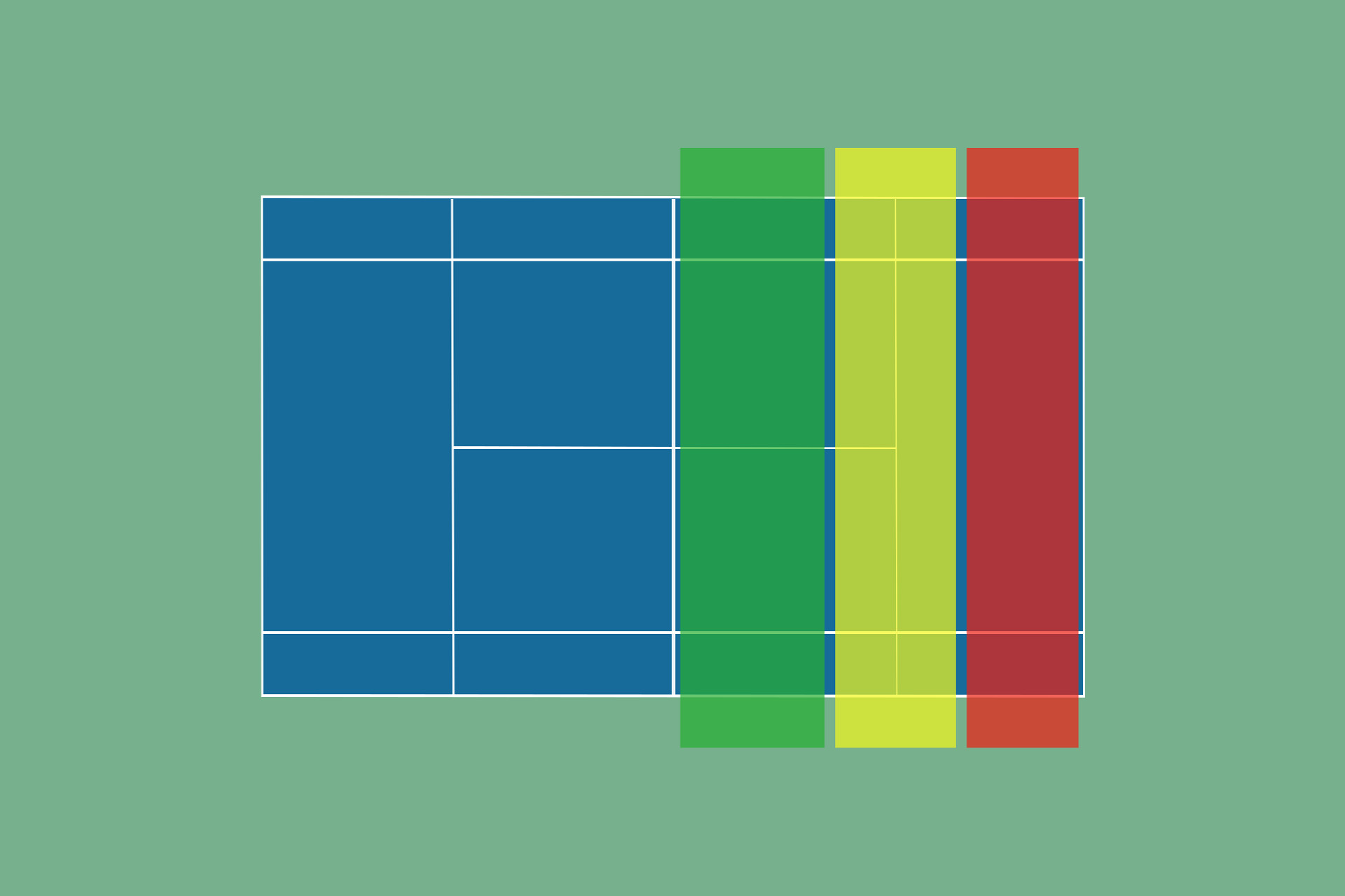
Tennis air zones
On the other hand, tennis air zones refer to the height of the ball when it travels over the net, and define the targets you should aim at:
🔸 LOW 👶🏼 ZONE 👉🏻 0.5 - 1 m (~ 2 - 3 feet) over the net
🔸 MEDIUM 👧🏼 ZONE 👉🏻 1 - 1.5 m (~ 3 - 5 feet) over the net
🔸 HIGH 👱🏼♀️ ZONE 👉🏻 2 - 3 m (~ 6 - 10 feet) over the net
✔️ Now that you know the main tennis court zones and air zones, it's all downhill ⛷. In fact, you have all you need to understand the missing piece of the puzzle 🧩, what I like to call the zonal tennis formula.
The zonal tennis formula
The zonal tennis formula 🔢 puts together the tennis court zones and air zones to summarize what's at the base of zonal tennis: the relation of cause-effect 🔄 (or constraint ⚓️ - target 🎯) between the two types of zones.
It consists of 3 rules, each of which links 🔗 one court zone to one air zone:
🔺 ball lands in the GREEN 🌱 zone 👉🏻 aim at the LOW 👶🏼 zone
🔺 ball lands in the YELLOW 🌼 zone 👉🏻 aim at the MEDIUM 👧🏼 zone
🔺 ball lands in the RED 🌶 zone 👉🏻 aim at the HIGH 👱🏼♀️ zone
But let's see why this formula works so well when it comes to shot selection.
Why zonal tennis works
When the ball lands in the green zone, unless it's a well-executed drop shot or you're caught off guard and end up barely catching the ball, you are super close to the net and pretty much have all the angles at your fingertips 😎.
That's why you have the right (and duty, or you'll risk to hit out) to aim at the low zone. Because you're in a privileged position 👑, which gives you the opportunity to hurt your opponent ⚔️ without incurring too much risk. So go ahead and obliterate 💣!
When the ball lands in the yellow zone, you're in a so-and-so position: not the best but neither the worst. The angles 📐 you have access to are narrower than before, but with the right amount of spin and power you can still ensure your opponent won't hurt you with his next shot and, why not, put some pressure on him 💪🏻.
In this case, you should 100% aim at the medium zone and forget about the low zone 🚫. Why? Because you're in a neutral position that doesn't guarantee you the same high chance of success with the same low risk as the green zone. So unless you want to ignore the numbers and just hope for the best, focus on tormenting your opponent 👻!
Finally, when the ball lands in the red zone, either you anticipate or you end up far back, behind the baseline 🔭. In either cases, the odds you're going to win the point with the next shot are not very high ⚖️: the angles you can find from there are very little, so it's not worth the risk ❌.
Which is why you should aim at the high zone. Because that's what maximizes your chances 📊 of keeping your opponent far enough from the net, preventing him to finish the point with the next shot. So in this case, grind 💦 and keep the ball high!
And voilà, that's it for zonal tennis. Now it's your turn!
Let me know in the comments about your experience with tennis shot selection. How do you choose the right shot at the right time?
👉🏻 Do you use some kind of strategy, like zonal tennis or the DNO theory? And how and how often do you practice it?
👉🏻 Or it just comes automatic to you? If so, lucky you 🍀: it's a great ability to have!
Hope you learnt something new and got some ideas on how to simplify shot selection! If you did, leave me a clap (or two) so I know you did 🙏🏻
Then you're one of us! We're a community of passionate and motivated tennis players who work hard every day 💦 to reach their goals, motivate each other 🔥 to keep going when things get tough and share their own experiences 💬 so everybody can get better faster.
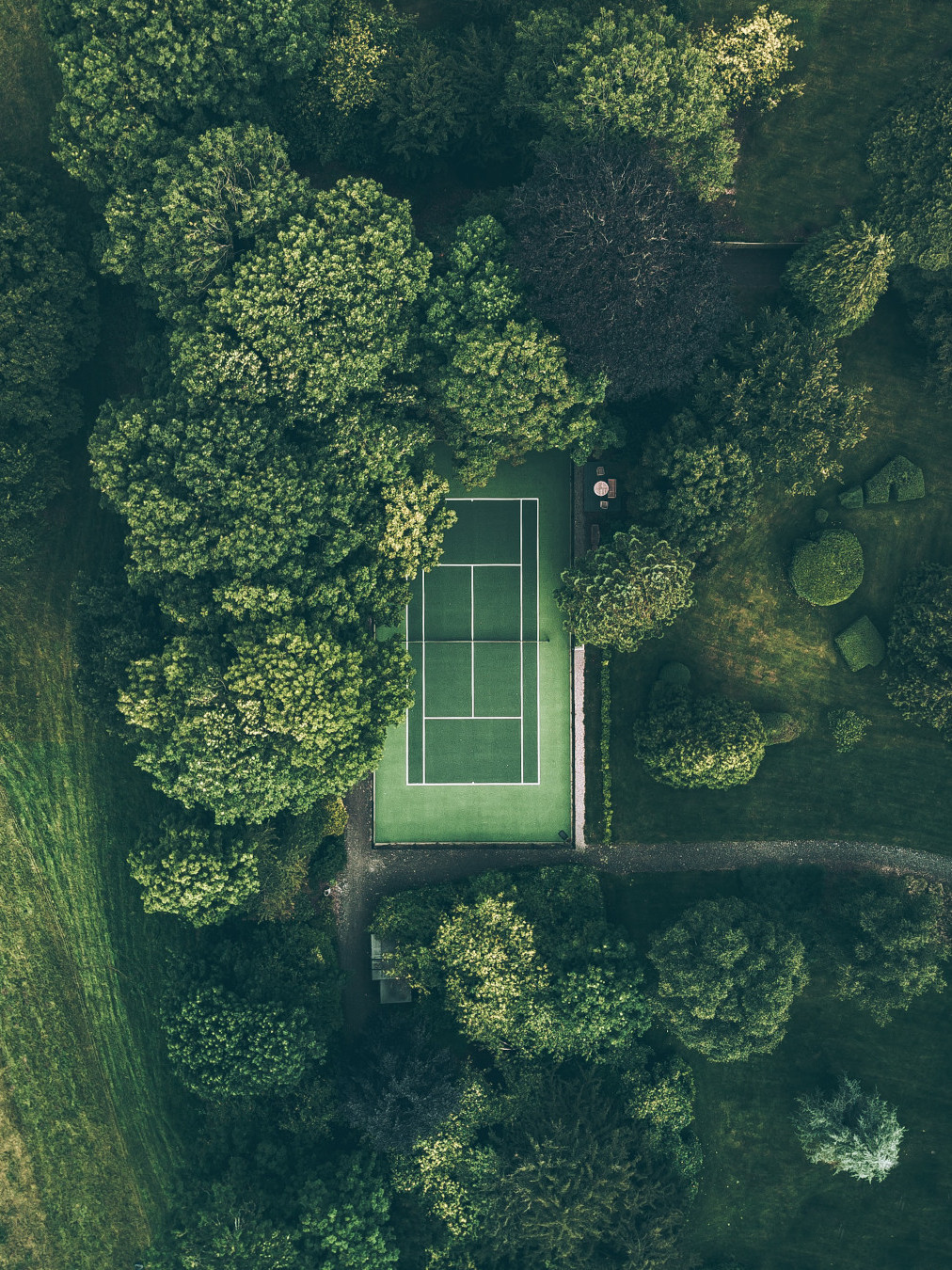
Hungry for more?
Enjoy these tennis bites, they’re just as good! 🤗👇
